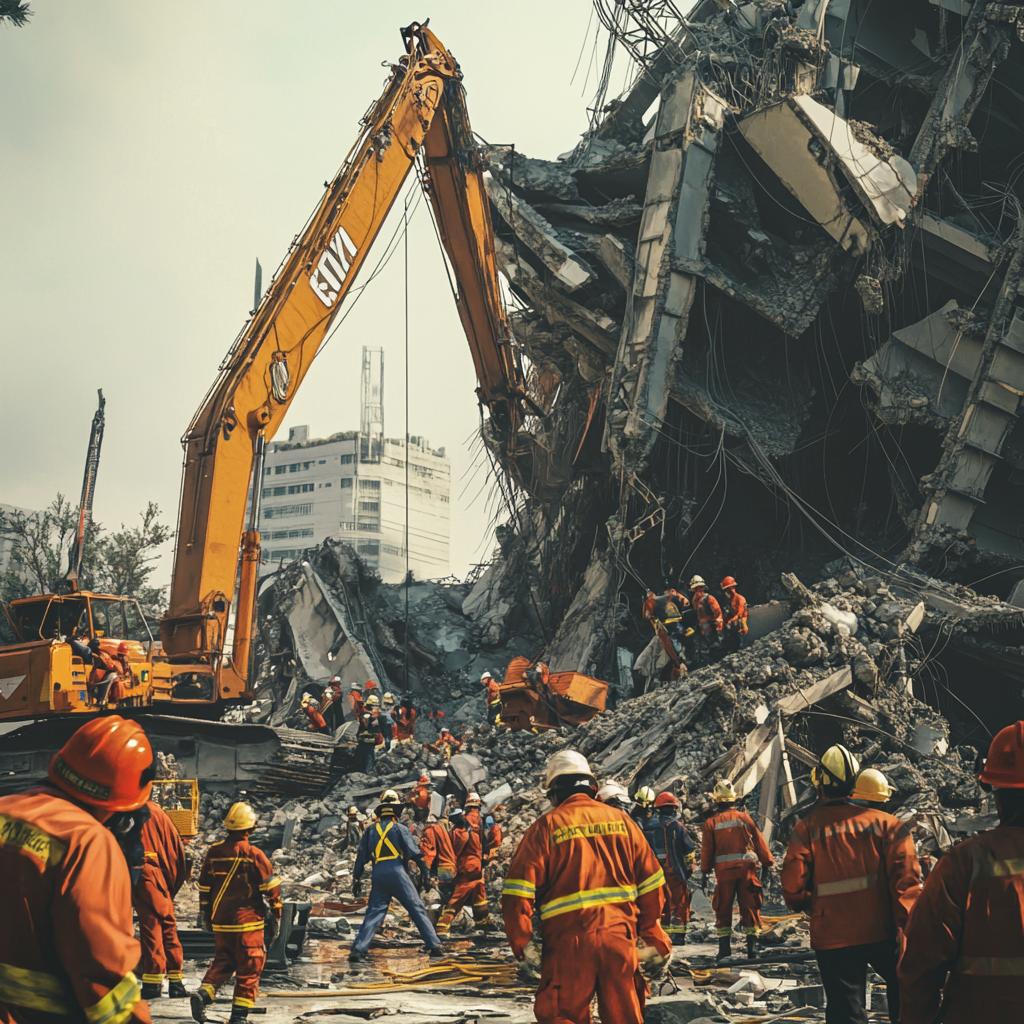A breezy April Fool’s morning turned quite serious in the heart of Bangkok as Governor Chadchart Sittipunt took to the airwaves, briefing the city on a tense scene unfolding in Chatuchak. Like a movie plot we all wish was fiction, an unexpected earthquake had left a building in rubble, and the Governor was central to orchestrating the narrative of rescue and survival.
Picture this: At the crack of dawn, amidst a cacophony of sirens and the orchestrated chaos of rescue operations, Chadchart stands at the Incident Command Centre. Here, plans roll out as smoothly as a well-rehearsed Hollywood script. Despite being foiled by the whims of Mother Nature, a finishing touch of camaraderie with an international dream team of rescuers is propelling efforts forward with laser precision. Their task? To sift through the detritus of yesterday, bit by bit, prioritizing the safety of lives above all else.
The Governor paints a scene where four massive cranes—like titans of industry—are intertwined in a ballet of delicate art and brute force. Open your eyes and you might just imagine: a 600-tonne giant strides forward, flanked by a 500-tonne partner coordinating their dance alongside two spry 200-tonnes. Their mission commenced in an early morning flourish, prying at the cityscape to unveil vital leads hidden beneath the debris, clearing over a mountain’s worth of rubble by midday. Yet, more pieces remain to be dismantled—67 to be exact—each revealing a new layer of the tale untold.
Heartbeat by heartbeat, hope flickers like a lighthouse beacon in the night. Signs of life remain elusive, but among the shards of a somnolent structure, a grim dozen have been found. Our love-led leaders, hearts centered on unyielding resolve, carry the goosebump-inducing task of retrieval—ready to swing into action to save those afraid under their cover. Hope is not just a feeling but an action; it propels their protocol of promise, prioritizing those who might still weave breath into their narrative.
If you think this story can’t stretch any thinner without snapping, think again. Ground crews are navigating the terrain with surgical precision, banishing barriers to make way for their colleagues above. The operation rolls on past twilight into nightfall, like a grueling marathon under perpetually hopeful streetlights. A band of international virtuosos echoes the softly resolute notes of optimism, sharing tales of survival defying odds and time—it’s dots of light in a mosaic of determination.
As solemn as a church bell tolling, authorities mix in their batch of inquiry alongside remedy, threading evidence through this tapestry of trial, trusting that each find inches closer to the soulful truth. Witnessing their optimism harnessed to pragmatism is like seeing an old friend slip into comfortable chatter—you trust them. Chadchart steps forth once more, refusing prediction games with the earnest honesty of a good storyteller. “We are here, on a mission fuelled by hope, not sorry statistics,” he utters, galvanizing faith not to flinch in the face of fear or finality. He leaves the door wide open with calculated patience—because sometimes, hope is the only percentage worth covering.


















It’s incredible to see the unity in such a tragic situation. Kudos to the Governor and the rescue team!
True, but let’s not forget the inefficiencies in the city’s building regulations that might have prevented this.
That’s fair, Mark. But right now, the focus should be on saving lives.
Maybe this catastrophe will finally push for stricter regulations.
This is another example of nature’s fury. We need to prioritize eco-friendly policies now!
The earthquake isn’t related to eco-friendliness though. It’s a natural disaster.
True, but climate resilience goes hand in hand with disaster management.
Some people always find a way to turn every crisis into an environmental argument!
Why weren’t there any warning systems in place? Lives could have been saved!
Earthquake prediction is hardly possible with our current tech, John.
Maybe, but better preparation could minimize the impact.
I wish there were more leaders like Chadchart. His ability to handle pressure is inspiring!
Agree! However, it’ll be interesting to see if he maintains this momentum post-crisis.
I feel like there’s more to this story than meets the eye. Was the building up to code?
You raise a valid point. The investigation should bring those details to light.
It’s all speculation until we have hard evidence. Let’s focus on the ongoing rescue efforts for now.
I just hope there’s transparency in the investigation.
The international support in these situations is always incredible. Humanity wins.
International support is great, but let’s not forget the bureaucracy that often delays aid.
Unfortunately, red tape is unavoidable in complex operations like these.
I can’t imagine the terror residents must have felt. My heart goes out to them.
Totally, feels like we take our safety for granted until something like this hits home.
Is it just me or do natural disasters reveal more about the strengths and weaknesses of humanity than anything else?
Absolutely, they really showcase both human resilience and our occasionally lacking preparation.
Disasters challenge our character in a way peaceful times can’t.
Why isn’t there more media coverage on this? Raises eyebrow.
Maybe the media is focusing more on ‘trending’ news? This deserves more attention.
I bet the government knew this would happen and did nothing.
That’s a bold claim with no evidence. Conspiracy theories don’t help.
Praying for the rescuers and the victims. We need all the strength and hope we can muster.
I’m always amazed at how quickly communities can come together in times like these.
Gives me more motivation to focus on sustainable and earthquake-resistant designs in my studies.
I wonder how this will impact the tourism in Bangkok. They’re known for bouncing back but this is big.